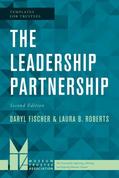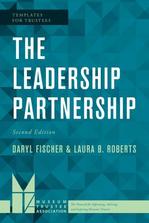Templates for Trustees
Templates for Trustees is a four-part series designed by the Museum Trustee Association to focus attention on key processes and tasks of governance. The books and web-based customizable templates include tools that collect information and then guide the board in using that information to organize their thoughts, identify their priorities, and plan their actions. All templates in the series have two parts: a printed guide and an online website. Purchasers of the books have access to the ongoing assistance of MTA staff.
Building Museum Boards, Third Edition
|
Building Museum Boards examines emerging practices in nonprofit governance including diversifying board composition, improving board effectiveness, and strengthening the governance committee. The text and templates guide the governance committee through every step of the nomination and board-building process including identifying and cultivating board prospects; crafting job descriptions for members, officers, and committees; ensuring compliance with conflict of interest standards; and orienting and activating new board members. The entire process is summarized in an interactive calendar
|
The Leadership Partnership, Second Edition
|
The Leadership Partnership explores and supports this critical partnership between the executive director and the board and helps leadership develop strategies and approaches appropriate for the individual institution. A series of online surveys allows board members to look at their own performance, that of the board as a whole and that of the executive director across ten critical areas of museum management: mission, vision and strategy; professional development, board operations, individual relationships, oversight, finances and fundraising, collections, facilities, and public engagement. The final template guides users into turning the findings from the surveys into a leadership plan, to be presented and discussed with the board
|
Executive Transitions, Second Edition
|
Executive Transitions encourages board and staff members to see leadership transitions as opportunities for strategic growth. Whether a director’s departure stems from a carefully crafted succession plan or is a completely unanticipated event, the text and accompanying templates will be useful to museums of all types and sizes. They guide the search committee through each step of the executive search process: announcing the previous director’s departure and considering interim leadership options, conducting an institutional audit that will serve as the basis for identifying professional skills and personal qualities needed in the new leader, writing and posting the position announcement, screening initial candidates and interviewing finalists, conducting reference and background checks, and extending an offer. And because it is the board’s responsibility to not only hire the new director but to facilitate his or her success, the final chapter focuses on the all-important transition year
|
Strategic Thinking and Planning, Second Edition
|
Strategic Thinking and Planning models the kind of thinking that is required not only to create a strategic plan that is tailored to each institution, but also to stay focused on the strategic aspects of governance while implementing that plan. Planning teams are introduced to exercises and tools that will help them focus on what’s most important to the future of their institution. In using the templates, they will adopt new ways of analyzing information and thinking about their museum’s mission that will make them more effective leaders
|








